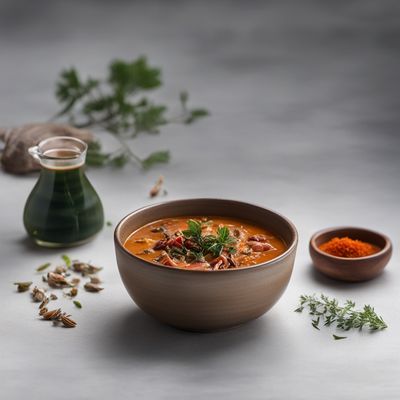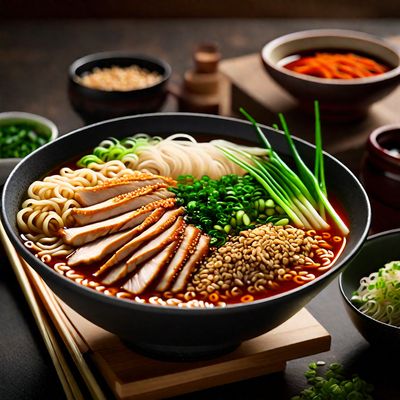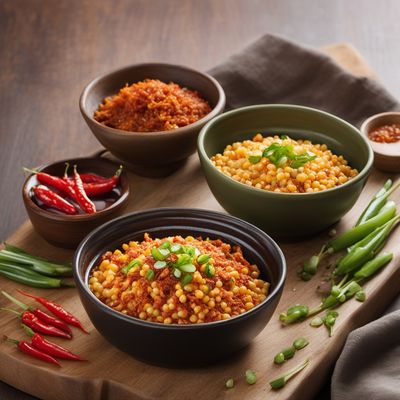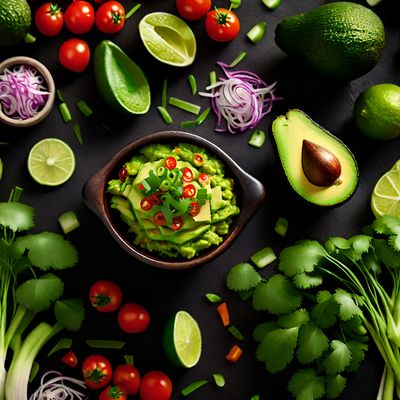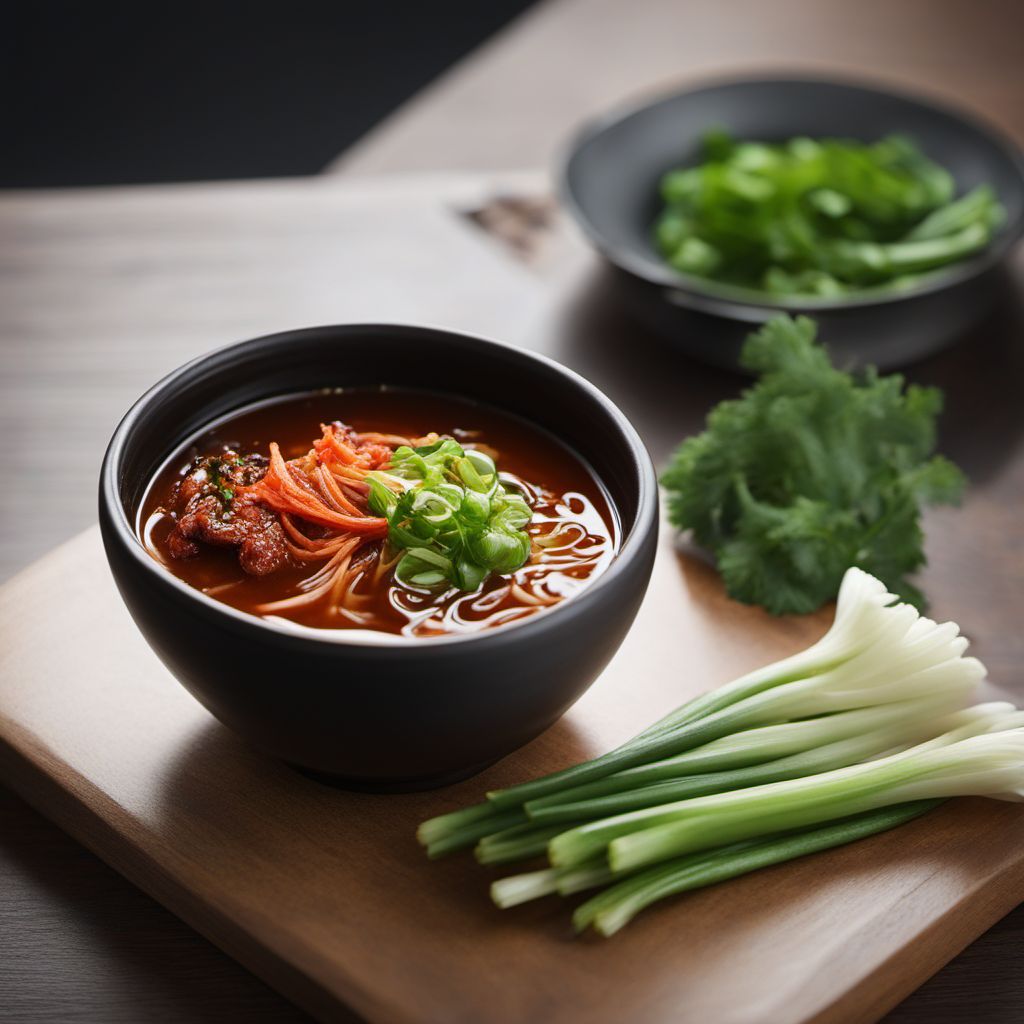
Recipe
Beondegi Soup with Spicy Kimchi Broth
Silkworm Larvae Delight: Beondegi Soup with a Spicy Twist
3.9 out of 5
Indulge in the unique flavors of Korean cuisine with this authentic Beondegi Soup recipe. Made with tender silkworm larvae simmered in a spicy kimchi broth, this dish offers a delightful combination of textures and tastes.
Metadata
Preparation time
15 minutes
Cooking time
15 minutes
Total time
30 minutes
Yields
4 servings
Preparation difficulty
Easy
Suitable for
Gluten-free, Dairy-free, Low-carb, High-protein, Paleo
Allergens
Silkworm larvae, Soy
Not suitable for
Vegan, Vegetarian, Nut-free, Shellfish-free, Soy-free
Ingredients
-
2 cups (470ml) water 2 cups (470ml) water
-
1 cup (200g) silkworm larvae (beondegi) 1 cup (200g) silkworm larvae (beondegi)
-
1 cup (240ml) chicken or vegetable broth 1 cup (240ml) chicken or vegetable broth
-
1 cup (240ml) kimchi, chopped 1 cup (240ml) kimchi, chopped
-
2 cloves garlic, minced 2 cloves garlic, minced
-
1 tablespoon gochujang (Korean chili paste) 1 tablespoon gochujang (Korean chili paste)
-
1 tablespoon soy sauce 1 tablespoon soy sauce
-
1 teaspoon sesame oil 1 teaspoon sesame oil
-
1 green onion, thinly sliced 1 green onion, thinly sliced
-
Salt and pepper to taste Salt and pepper to taste
Nutrition
- Calories (kcal / KJ): 180 kcal / 753 KJ
- Fat (total, saturated): 8g, 1g
- Carbohydrates (total, sugars): 10g, 3g
- Protein: 18g
- Fiber: 3g
- Salt: 2g
Preparation
-
1.In a large pot, bring water to a boil. Add the silkworm larvae and cook for 5 minutes. Drain and set aside.
-
2.In the same pot, heat the chicken or vegetable broth over medium heat. Add the kimchi, garlic, gochujang, and soy sauce. Stir well to combine.
-
3.Add the cooked silkworm larvae to the pot and simmer for 10 minutes, allowing the flavors to meld together.
-
4.Stir in the sesame oil and season with salt and pepper to taste.
-
5.Serve the Beondegi Soup hot, garnished with sliced green onions.
Treat your ingredients with care...
- Silkworm larvae — Make sure to cook the larvae until they are tender. Overcooking may result in a mushy texture.
- Kimchi — Use well-fermented kimchi for the best flavor. If you prefer a milder taste, rinse the kimchi before adding it to the soup.
Tips & Tricks
- If you can't find silkworm larvae, you can substitute them with cooked edamame beans for a similar texture.
- Adjust the spiciness of the soup by adding more or less gochujang according to your preference.
- Serve the Beondegi Soup with a side of steamed rice for a complete meal.
- For an extra kick of flavor, top the soup with a drizzle of sesame oil and a sprinkle of toasted sesame seeds.
- Leftovers can be stored in the refrigerator for up to 3 days. Reheat gently on the stovetop before serving.
Serving advice
Serve the Beondegi Soup hot as a comforting appetizer or as a main course accompanied by steamed rice. Garnish with sliced green onions for a pop of freshness.
Presentation advice
Present the Beondegi Soup in individual bowls, showcasing the vibrant red color of the spicy kimchi broth. Arrange the silkworm larvae and kimchi pieces on top, and sprinkle with sliced green onions for an appealing visual contrast.
More recipes...
More Korean cuisine dishes » Browse all

Guihan
Fish Soup
Guihan is a traditional Chamorro dish that is made with fish, coconut milk, and vegetables. It is a flavorful and hearty dish that is perfect for...

Hobakjeon
Zucchini Pancake
Hobakjeon is a Korean dish made with sliced pumpkin that is coated in a flour and egg batter and pan-fried.
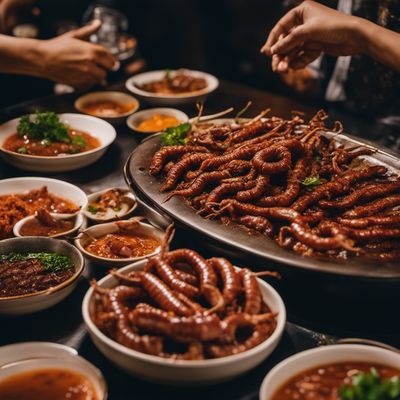
Gopchang-gui
Grilled small intestines
Gopchang-gui is a traditional Korean dish made from grilled beef or pork intestines.
